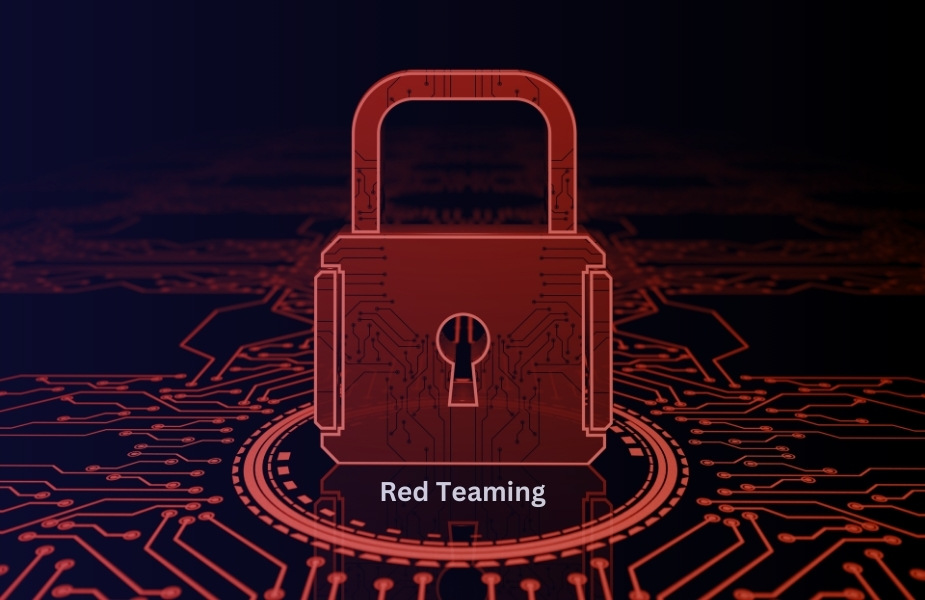How Can Red Teaming Enhance Your Cybersecurity Measures?
Conventional security solutions are sometimes compared to a mediaeval castle wall in today’s ever-present cyber threat landscape—strong and formidable, but ultimately vulnerable to a determined siege. Envision a relentless adversary who is always looking for gaps in your defenses, utilizing methods that are always changing, and taking advantage of the smallest hole in your armor. This is the fundamental idea behind red teaming, an essential security procedure that mimics actual attacks to find vulnerabilities in systems and improve overall security posture.
The Red Team Advantage
Penetration testing (PT), which functions as a security scan to find vulnerabilities in your apps and systems, is an essential component of security assessments. But security evaluation is elevated to a whole new level by red teaming. Red teaming is crucial for creating impenetrable defenses for the following reasons:
Unleashing the Adversary Mindset
Red teams don’t just scan for vulnerabilities; they act like real-world adversaries. They employ advanced hacking techniques, social engineering tactics, and even zero-day vulnerabilities (previously unknown exploits) to gain access to your systems and data. This goes beyond the scripted approach of traditional PT, providing a much more realistic assessment of your security preparedness. Traditional PT is akin to a sparring match with a pre-determined set of moves, while red teaming is a chaotic battlefield where the enemy constantly adapts and innovates.
Unearthing Unforeseen Weaknesses
Red teaming goes further and finds weaknesses that regular PT could overlook. Red teams can uncover vulnerabilities in areas other than your code or applications by modelling long-term attacks. They can highlight weaknesses in your incident response plans, security policies, and procedures, exposing potential entry points for hackers using human error or social engineering to penetrate your network. A door with a weak latch might be detected by traditional physical therapy, but red teaming might find an extra key behind the welcome mat.
Stress-Testing Your Defenses
Red teaming pushes your security controls to their limits. By simulating real-world attack scenarios, red teams can expose weaknesses in your firewalls, intrusion detection systems (IDS), and other security measures. This allows you to identify areas where your defenses need improvement and prioritize your security investments. Imagine conducting fire drills only to discover your fire hoses are faulty or there’s no water pressure.
Red Teaming Methodology
Red teaming engagements are meticulously designed to uncover every possible vulnerability, employing a multi-faceted approach:
- Collaborative Planning and Scoping:
Work together with the client to understand their security posture, critical assets, and potential attack vectors. This ensures the red team engagement focuses on the most relevant security risks for the organization, tailoring the assault to target specific vulnerabilities, not generic weaknesses. Imagine a military commander meticulously studying the enemy’s defenses before launching an attack. Red teaming follows a similar principle – gather intelligence to craft a targeted and impactful attack strategy. - In-Depth Intelligence Gathering:
The red team gathers information about the client’s systems, network configuration, and user behavior through various techniques, mimicking real-world attackers. This allows them to tailor their attacks to specific vulnerabilities. Imagine a thief casing a house, learning the routines and security measures in place. Red teaming employs similar reconnaissance tactics to gather intelligence that informs their attack strategy. - Social Engineering Tactics:
Red teams may attempt social engineering tactics like phishing emails, vishing calls, or even physical attacks to exploit human vulnerabilities within the client’s organization. This assesses employee awareness and training effectiveness, exposing areas where attackers might manipulate employees into granting access or divulging sensitive information. - Network Intrusion Simulations:
Red teams employ various hacking techniques to gain unauthorized access to the client’s systems and data. This exposes weaknesses in network security controls and highlights areas where attackers might breach defenses. Imagine a military exercise testing the fortifications of a city – red teaming utilizes similar methods to probe the strength of network perimeters. - Exhaustive Reporting and Remediation:
Upon completion, a detailed report is delivered outlining the attack methods used, vulnerabilities discovered, and actionable recommendations for remediation. This empowers the client to address security gaps and enhance their defenses. We don’t just tell you there’s a hole in the wall – we provide a blueprint to patch it and fortify your entire structure.
Why wait for an attacker to reveal the weaknesses in your defenses? Understanding the power of red teaming could be the turning point in your cybersecurity strategy. It’s a method that ensures when the battle comes to your doorstep, you’re more than ready—you’re waiting.
Looking to transform your cybersecurity defenses from reactive to proactive? Explore the possibilities of red teaming and enhance your preparedness for any cyber threat. Reach out today to discuss how a bespoke red teaming exercise could be the key to unlocking a more secure future for your organization.
